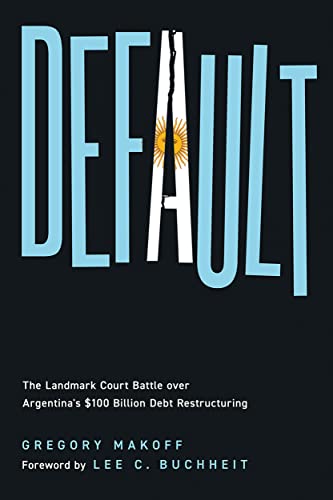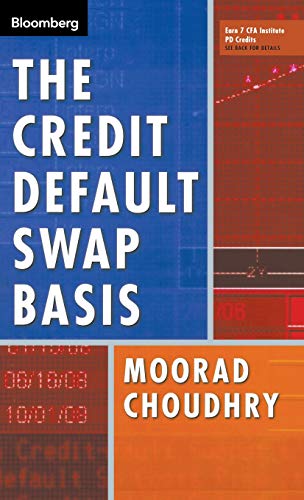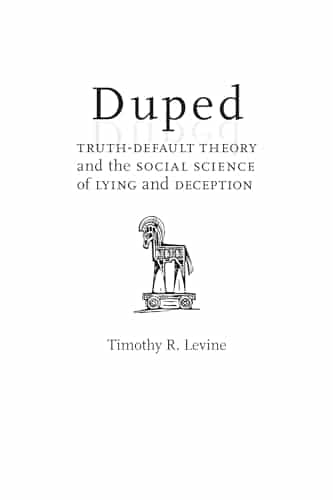Understanding what ‘default’ means in the debt world is crucial for both borrowers and lenders. The specter of default can loom like a storm cloud over financial agreements, waving not just a red flag, but flapping a whole red tablecloth. So, lace up your financial boots folks, because we’re diving deep into the rabbit hole of default—where it can lead and, most importantly, how to dodge the potholes on this rocky road.

Understanding Default: What It Means for Borrowers and Lenders
To default is to drop the ball big time on your debt repayments. If you think of your mortgage as a symphony, default is the cacophonous sound when a borrower suddenly stops playing along with their contractual obligations. And trust me, no one wants to listen to that tune.
For borrowers, being in default is like being in hot water—except that water can scald your credit rating and wash away your future borrowing prospects. Sinking into default isn’t just about missing one or two payments. It’s a full-blown “I can’t keep up with this financial pace anymore”.
Lenders, on the flip side, aren’t throwing confetti when you default. They’re in the business to make, not lose, money. Defaults are bad news for their balance sheets and can cause a gnarly domino effect in the financial markets.
Default The Landmark Court Battle over Argentina’s $Billion Debt Restructuring

$29.95
“Default: The Landmark Court Battle over Argentina’s $Billion Debt Restructuring” is a riveting non-fiction account that plunges readers into the complexities and intrigue of one of the most consequential financial showdowns of the 21st century. The book meticulously chronicles Argentina’s tumultuous journey through fiscal mismanagement, economic crisis, and the unprecedented legal tussles that followed its decision to default on over $100 billion in sovereign debt. Through detailed reporting and engaging storytelling, the author captures the high-stakes negotiations between Argentina and its creditors, the fierce litigations in international courts, and the global implications of the country’s financial maneuvers.
At the heart of this saga are the larger-than-life personalitiesfrom tenacious hedge fund managers and astute lawyers to the defiant Argentine policymakersthat shaped the course of this economic battle. The narrative reveals the strategic gambits and ethical quandaries facing both sides, as gatekeepers of high finance clash with a nation stricken by economic woes desperate to protect its citizens from austerity measures. Readers gain intimate access to closed-door discussions and legal strategies, providing a granular view of the sovereign debt marketplace and its impact on global economies.
“Default” is not only a deep dive into a landmark legal dispute but also a comprehensive exploration of the intricate interplay between global finance and national sovereignty. The author deftly handles the explanation of complex financial instruments and the implications of sovereign debt restructuring, making the subject matter accessible and engaging to both finance professionals and lay readers with an interest in economic affairs. With its potent mix of financial analysis, courtroom drama, and political intrigue, “Default” is an essential read for anyone seeking to understand the precarious nature of international finance and the delicate balance of power in the modern economic order.
The Mechanism of Default: A Closer Look at How It Occurs
It all starts with a slight stumble—maybe a missed payment or two. But without fast action, this can escalate faster than a snowball barreling downhill.
Early warning signs and triggers could be creeping increases in household expenses or a job loss—situations that tighten the budget belt to the last notch. Watch for these signals like a hawk to prevent the fall before the ground comes rushing up to meet you.

| Aspect of Default | Description |
|---|---|
| Definition | A default occurs when a borrower fails to make the required payments on a debt. |
| Types of Default | Secured Debt Default (e.g., mortgage on a house) and Unsecured Debt Default (e.g., credit cards, student loans). |
| Consequences | Legal action, credit score reduction, limited access to future credit, and potential seizure of property. |
| Legal Claims | Lenders may pursue legal claims to recover outstanding debts, which could include foreclosure or repossession. |
| By Default (Formal Definition) | An occurrence that happens only because an alternative event did not occur; often refers to a preselected option or standard setting. |
| Software Default | In programming, the preestablished value or setting used by a program when no user input is provided. |
| Mortgage Default | Failure to meet mortgage repayments, which might lead to home repossession. |
| Debt Collection | Upon default, debt may be sent to an agency tasked with collecting unpaid funds. |
| Impact on Credit Score | A loan default can significantly lower an individual’s credit score. |
| Federal Student Loan Default | Defined as no payment made for more than 270 days. |
| Date Specific Information | As of October 17, 2023, a loan default may result in personal property seizure. As of November 7, 2023, federal student loans are in default after 270 days without payment. |
Common Causes of Default: Identifying the Risk Factors
Defaults don’t just pop up out of the blue. They’re usually the result of a perfect storm. Economic factors—like interest rate hikes that make your monthly repayments shoot up, or a market that’s as stable as a house of cards—can edge borrowers closer to the brink.
On the personal front, if you’re hit with unemployment or an unforeseen medical bill, your financial ship can start taking on water. And before you know it, you might find yourself shouting ‘Mayday!’
Change in market conditions, rising interest rates, and economic turbulence can all make the ride bumpier, upping default risk faster than you can say “Subprime mortgage crisis.”

Default Prevention: Strategies for Individuals
Want to keep the wolf from your financial door? Here’s how:
The Credit Default Swap Basis

$41.08
Title: The Credit Default Swap Basis
The Credit Default Swap Basis is an advanced financial tool designed to provide market participants with a comprehensive measure of the discrepancy between the credit default swap (CDS) market and the underlying cash bond market. This innovative product caters to investors, risk managers, and financial analysts who are keen on understanding the nuances and spreads in credit risk pricing. By enabling an analysis of the basis, i.e., the difference between the CDS spread and the bond yield spread, the tool facilitates a more informed arbitrage or hedging strategy.
With an intuitive interface and real-time data feeds, The Credit Default Swap Basis offers users the ability to track and analyze the convergence or divergence between the two markets for a wide range of credit instruments. It quantifies the credit risk premium investors demand for taking on the default risk of a corporate or sovereign entity, outside of the other market-driven factors. Users can leverage this information to identify mispricings and assess the relative attractiveness of entering into a CDS contract versus purchasing a bond.
Additionally, The Credit Default Swap Basis incorporates sophisticated modeling techniques to forecast basis movements and imply market sentiments. Armed with a historical database and trend analysis tools, it allows for back-testing trading strategies based on basis movements. Its robust framework supports stress-testing and scenario analysis to help institutions manage credit exposure and meet regulatory requirements. For the strategic investor looking to capitalize on credit market inefficiencies, The Credit Default Swap Basis is an indispensable resource that melds analytical rigor with practical, market-oriented insight.
Default Prevention: Strategies for Lenders
Lenders aren’t just sitting ducks waiting for defaults to happen. They’ve got their own toolkit to ward off the default demons:

Recognizing the Red Flags: When Default Risk Is High
Financial changes that scream “Danger ahead!” aren’t always wearing a neon sign. But there are indicators like spending more than you earn or borrowing to pay debt that can be telltale harbingers. Behavior-wise, if someone’s avoiding the lender’s phone calls like they’re dodging that awkward party invitation, the writing might be on the wall.

Navigating Economic Downturns: Default Risks and Mitigation Strategies
Economic downturns can be the grim reapers of default rates. Borrowers and lenders should have their game faces on and strategies ready to combat these conditions. Think of it as the financial equivalent of storm-proofing your house.
Duped Truth Default Theory and the Social Science of Lying and Deception

$34.95
The “Duped Truth Default Theory and the Social Science of Lying and Deception” is an enlightening text that delves into the psychological underpinnings of trust and betrayal in human interactions. It builds upon Timothy R. Levine’s ‘Truth Default Theory’ (TDT), which posits that people have a baseline tendency to believe others rather than doubt their honesty. With rigorous analysis and compelling case studies, the book examines the circumstances in which people are more likely to suspect deception, and conversely, when they fall prey to falsehoods because of their truth-biased stance. Expertly intertwining elements of communication theory, behavioral psychology, and forensic science, this book reveals the complex web of factors influencing our perception of truth and lies.
The book meticulously explores various aspects of lying and truth-telling, dissecting the social and personal implications of both. Readers will learn about the intricacies of verbal and non-verbal cues in deceiving and detecting lies, and how context, culture, and individual differences affect our ability to discern the truth. The text also provides valuable insights on the ethical dimensions of deception, questioning the moral boundaries between harmless social lies and pernicious deceit. Each chapter uses empirical evidence to challenge the reader’s assumptions, inviting them to understand the nuanced nature of honesty and deception in everyday life.
Designed for both scholars and the curious mind, “Duped” serves as a comprehensive resource for understanding how lies shape our realities and relationships. Educators, students, and professionals studying communication, psychology, sociology, and related fields will find the book’s synthesis of research particularly useful for academic or practical applications. Not only does it furnish the reader with advanced knowledge of deceit, but it also offers strategies to improve lie detection skills and foster more authentic interactions. With its thought-provoking contents, “Duped” is a must-read that equips its audience with the cognitive tools to navigate a world where truth and illusion are often indistinguishable.
Technological Tools: Leveraging Technology to Monitor and Predict Default Risks
These days, fintech is the superhero in the world of default risk management, swooping in with data analytics and predictive models. They’re the Batman to your Gotham City, using the high-tech Batcomputer to pinpoint potential default hotspots.

Legal Implications of Default: Rights and Responsibilities
Defaulting is like breaking a contract, and there’s no “Get out of Jail Free” card here. The law can be unforgiving, and the outcomes—one’s home wreathed in the dreaded foreclosure banner, for instance—can be severe. Globally, these laws are as varied as the flavors in that exotic ice cream shop you’ve been eyeing.
Case Studies: Lessons Learned from Past Defaults
Every default has its story, with twists and pitfalls that could rival a soap opera plot. Analyzing these sagas provides us with a treasure trove of do’s and don’ts. Real-life tales can teach us plenty about averting a financial faceplant.
Keeping Up with the Trends: How New Lending Practices Influence Default Rates
Lending has been flirting with innovation, and it’s no casual affair. From peer-to-peer lending to regulatory cha-chas, the financial dance floor is never static, and these steps directly affect default rates. Stay tuned to the rhythm to avoid stepping on your partner’s toes.
An Innovative Approach to Defaults: Alternative Financing Models
Thinking outside the bank vault can yield alternatives that may trim down default risk. These models seek a sweet spot that serves both lender and borrower and can be as refreshing as a breeze that cuts through the summer heat.
Planning for the Future: How to Future-Proof Finances Against Default
Just as you’d future-proof your home from the elements, you can shore up your finances against defaults. This involves being as savvy about future economic cyclones as a seasoned weather forecaster.
Conclusion: Empowering Borrowers and Lenders to Minimize Default Risks
We’ve combed through the good, the bad, and the risky of defaults. Now, armed with a veritable Swiss Army knife of strategies, tips, and insights, both borrowers and lenders can put up a formidable fight against default. Stay hungry for knowledge, because just like technology, the financial landscape is always evolving, and staying on top of the game is the name of the game.
Remember, taking proactive measures against default isn’t just smart—it’s essential. With eyes wide open and tools in hand, we can navigate the sometimes choppy waters of finance with confidence. Now, let’s go forth and default-proof our futures!
Understanding Default: Don’t Drop the Ball
When it comes to navigating the choppy waters of home mortgage, the word ‘default’ might just send shivers down your spine. You’ve probably heard the horror stories – someone bites off more than they can chew, and before you know it, they’re drowning in missed payments and the bank is sending those ominous letters. But hey, let’s not get all doom and gloom! Stick with me, and you’ll become a default-dodging dynamo.
Earnest Money: Your First Line of Defense
Alright, let’s talk about that initial splash of cash known as “Earnest Money”. This is where you strut your stuff and show the sellers you’re serious about snagging that dream home. Think of it as your dating profile for the house market – you want to put your best foot forward. But remember, just like you wouldn’t wear dress Sneakers to run a marathon, you don’t want your earnest money to be a sprint when it’s a marathon you’re running! Get familiar with earnest money and keep it earnest, folks.
A Solid Foundation: The Mighty Down Payment
So you’re probably wondering, “How on earth can I avoid the dreaded default?” Enter the hero of our story: the “Down Payment”. The bigger this bad boy is, the more skin you’ve got in the game, and the less likely you’ll be getting the side-eye from your lender. In the kingdom of home buying, the down payment is like Morfydd Clark in a period drama – it’s that cornerstone performance that just holds everything together!
Tackling Delinquency Like a Pro
Oh boy, “Delinquency” – it’s like that pile of laundry you keep saying you’ll sort out … but don’t. Delinquency sneaks up like a ninja, silent but deadly. Before you know it, ka-pow! You’re in hot water. But fear not! Take a page out of Tracy Andersons workout regime—regular, consistent effort is the key to keeping those payments in check and that delinquency at bay.
The Support Squad: Lean on Your Financial Buddies
When it comes to swimming in the mortgage pool, why go it alone? There’s no “I” in “team,” and Rachel Bradshaw would tell you there’s no wingman like a solid financial advisor or planner to help you harmonize your cash-flow symphony. They’re the SPF to your Tankinis – crucial for protection when you’re basking in the glow of homeownership.
So there you have it! Default doesn’t have to be the beast in the closet. By arming yourself with knowledge and a spot-on strategy, you’ll steer clear of those risky waters and sail smoothly into the sunset of successful homeownership. Keep these tips under your belt and remember, in the game of loans, it pays to play it safe!
Default

$14.99
“Default” is a dynamic, user-friendly software platform designed to streamline the management of digital workflows for businesses of all sizes. At its core, the program offers an intuitive interface that makes it easy to navigate and set up complex processes with just a few clicks. With a suite of powerful automation tools, Default helps eliminate repetitive tasks, enabling teams to focus on creative and strategic activities that drive growth and efficiency. Its cloud-based architecture ensures that all data is secure, backed up, and accessible from anywhere, at any time.
One of the standout features of Default is its customizable nature, allowing users to tailor the software to meet the unique needs of their organization. Built-in analytics provide valuable insights into performance, helping managers make informed decisions to optimize operations. The platform’s adaptability extends to a wide array of third-party integrations, ensuring that Default works seamlessly with existing systems and software tools already in use within the business. With on-the-fly adjustments, Default keeps all team members on the same page through real-time updates and notifications.
Supporting Default is a dedicated customer service team that offers round-the-clock assistance to ensure uninterrupted workflow and satisfaction. User-centric tutorials and resources are readily available to assist with onboarding and ongoing education, empowering users to maximize the platform’s capabilities. Regular software updates are released, incorporating new features and improvements suggested by the user community, ensuring that Default remains at the cutting edge of workflow management technology. Moreover, the platform is scalable, growing effortlessly with the business, making it a reliable long-term solution for operations of expanding complexity and size.
What does being default mean?
Oh boy, being in default isn’t where you want to be – it means you’ve missed the boat on your loan payments and the lender’s not too happy about it. It’s like flunking a test ’cause you skipped studying, but with your finances.
What is the meaning of word by default?
By default? Well, it’s kind of like winning a race because the other runner didn’t show up – it’s what happens automatically if nothing else is specified or no other actions are taken. No competition required!
What does it mean to use as default?
To use something as default is tech-talk for picking your go-to choice. It’s like telling your TV it better start on ESPN every time you turn it on because, let’s be real, that’s where the action is.
What is default as defined?
Alright, default defined? It’s not just a computer thing; it’s when stuff happens automatically because no other instructions were given. Imagine expecting pizza, but getting plain ol’ bread because you didn’t specify – that’s default for you.
What happens when you set something as default?
Setting something as default is like telling your tech, “Hey, remember this one ’cause I’ll be using it a lot!” It’s your device’s way of knowing what you usually pick without asking you every darn time.
What does default mean on my phone?
Default on your phone is all about making choices without you lifting a finger. Decide once what app opens your emails, and bam, it’s set. No more choosing every time – talk about saving thumb energy!
What are two synonyms for default?
Two synonyms for default? How about “failure to act” or “neglect.” It’s like saying you didn’t show up to the party or forgot to bring the chips – not the MVP move.
What is the meaning of default in human?
In human terms, default is when you drop the ball – you didn’t do something you were supposed to, like paying a bill or showing up for your buddy’s karaoke night. Oops!
What does it mean when someone wins by default?
Winning by default? That’s like being the last person standing in musical chairs because everyone else forgot to sit down. No competition, you win because all the other contenders are out of the picture.
What does default in life mean?
Default in life is when autopilot takes over; you’re doing the everyday without shaking things up. It’s like being stuck in your old, comfy routines – the same sandwich for lunch, every. single. day.
What does set as default mean on my phone Samsung?
On your Samsung phone, set as default means picking your favorite app to do a certain job, kinda like aiming your remote at the TV and it just knows you wanna binge-watch your favorite series.
What are three 3 kinds of default?
Three kinds of default? Picture this: failing to pay a debt (financial default), software going rogue and doing its own thing (technical default), and skipping out on a legal obligation (legal default). It’s a no-show on responsibilities across the board.
Why do I have a default?
A default? Well, that’s your device grumbling, “Listen, I didn’t get any other orders, so I’m sticking with what I know.” It’s when it goes for the go-to option because you haven’t told it any different.
What are the two types of default?
Two types of default, you ask? Financial default happens when you don’t pay the piper (your debts), and technical default is when something’s not up to code – like breaking a rule without even trying.
Can they take your house if you default on a loan?
Can they take your house if you default on a loan? Oh, absolutely. If you don’t cough up the cash for your payments, the lender can say “Game over” and take your home through foreclosure. Protect your castle by keeping up with those payments!
What does default mean when buying a house?
What does default mean when buying a house? It’s a big no-no. It means you’ve missed payments and the lender’s knocking on your door. Think of it as a red flag waving high on your financial record – not a good look.
What does it mean when someone won by default?
Winning by default in sports or contests is like snagging the trophy ’cause the other team didn’t bother to lace up their sneakers. It’s victory lane with no race.
Can you come out of default?
Can you come out of default? Sure thing! It’s like making a comeback in a football game. You’ll need a game plan to tackle those missed payments and talk to your lender about a new playbook – they might help you score and get back on track.



